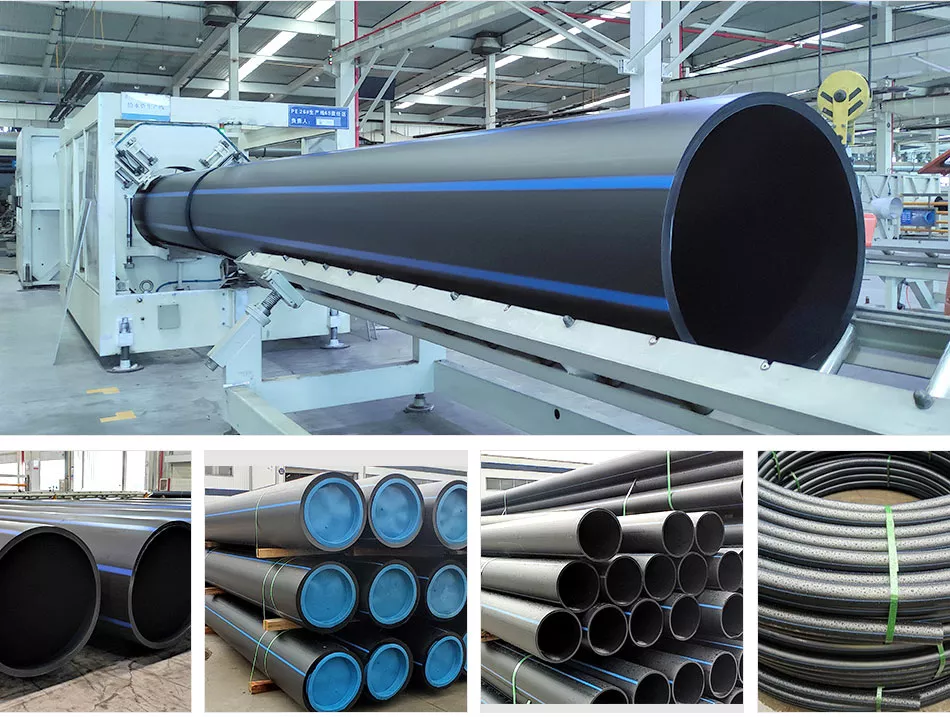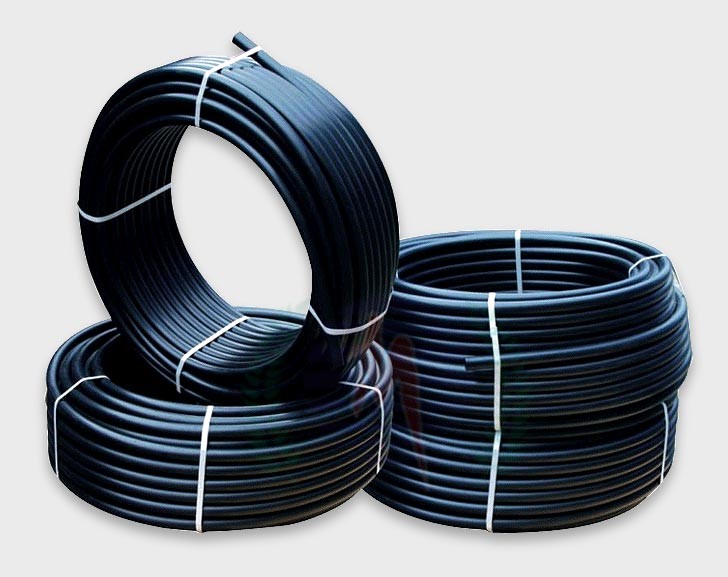Pipe Manufacturing Midland TX: Process Explained
Wiki Article
The Crucial Actions for Effective Installment of HDPE Pipe in Your Following Task
Effective installment of HDPE pipeline needs mindful preparation and implementation. Secret steps consist of examining job demands, preparing the site, and picking correct joining techniques. Each phase plays a crucial role in guaranteeing the integrity and efficiency of the pipe. Comprehending these necessary steps can significantly influence the general success of the project - Midland TX HDPE Pipe Fittings in Stock. The nuances of each step may hold the trick to getting over common obstacles faced during installation.Comprehending the Conveniences of HDPE Pipe
High-density polyethylene (HDPE) pipeline uses many advantages that make it a recommended option for numerous applications. Its high resistance to corrosion and chemicals assurances sturdiness popular atmospheres, greatly prolonging the life-span of setups. In addition, HDPE's versatility enables much easier installment, particularly in difficult terrains, as it can flex without damaging. The lightweight nature of HDPE pipeline simplifies transportation and handling, lowering labor costs during installation.In addition, HDPE pipe is recognized for its reduced friction coefficient, which boosts fluid flow and lessens power intake. Its smooth building lowers the risk of leaks, contributing to better resource administration and environmental management. On top of that, HDPE is recyclable, straightening with lasting techniques and reducing environmental effect. Generally, the mix of toughness, flexibility, and eco-friendliness makes HDPE pipe an exceptional choice for a variety of projects, from water circulation to commercial applications.
Planning Your HDPE Pipe Installment
When intending an installment of HDPE pipe, careful consideration of numerous crucial aspects is important to secure a successful task. Project supervisors have to analyze the certain requirements of the pipe, including the planned use, circulation rates, and environmental problems. Understanding these criteria will lead the choice of appropriate pipeline dimensions and product quality.Next, timelines should be developed, factoring in purchase schedules and any type of potential hold-ups. Coordination with regional authorities for permits and regulative compliance is additionally crucial. Furthermore, a comprehensive spending plan ought to be prepared, encompassing all prices associated with products, labor, and machinery.
It is essential to engage a certified group experienced in HDPE pipe installation. Their competence will certainly help alleviate risks, guarantee adherence to market criteria, and ultimately contribute to the task's success. Thorough preparation lays the groundwork for a smooth setup process and long-lasting efficiency of the HDPE piping system.
Preparing the Website for Setup
Proper website prep work is necessary for the successful setup of HDPE pipe. Prior to installation begins, the website should be thoroughly assessed to assure it satisfies all needed requirements. This includes surveying the ground for existing frameworks, energies, and possible hazards that could impede the installation procedure.

Correct elevation and placement need to be established to maintain a consistent gradient for water drainage objectives. Proper water drainage around the installation website is additionally vital to avoid water accumulation, which can lead to complications down the line.
Techniques for Signing Up With HDPE Pipes
Accomplishing a trusted connection between HDPE pipelines is essential for making sure the honesty and longevity of the setup. Different strategies exist for signing up with these pipelines, each fit for various task needs. Combination welding is just one of the most usual methods, using heat to bond the pipeline ends together, developing a seamless and resilient connection. This strategy can be more categorized into outlet fusion and butt blend, relying on the pipe configurations.Mechanical installations are an additional option, employing clamps and threaded adapters to join sections of HDPE pipeline. While normally faster to set up, they may call for additional upkeep over time. Electrofusion is a specialized method that involves using electric existing to heat and fuse the pipelines through specifically designed fittings, ensuring a strong bond. Picking the proper signing up with strategy is important, as it directly influences the total performance and dependability of the HDPE piping system in the desired application.
Evaluating and Assessment of Installed Pipes
The testing and examination of installed HDPE pipes are vital to guaranteeing their capability and longevity. This process encompasses visual assessment strategies, stress testing methods, and leak discovery treatments to determine potential problems. By utilizing these methods, experts can verify the honesty of the installation before it is taken into usage.Visual Inspection Techniques
Using efficient aesthetic evaluation techniques is vital for ensuring the stability of set up HDPE pipes. Inspectors should systematically examine all noticeable areas of the pipe to determine any type of signs of damage, misalignment, or improper installation. Key indicators to evaluate include joint stability, surface area irregularities, and connections. Inspectors might utilize tools such as multiplying glasses or video cameras to improve exposure and information. It is necessary to look for indications of ecological stress, such as distorting or excessive flexing, which can compromise performance. Consistent documentation of searchings for enables tracking changes in time and helps guide required repairs. By adhering to recognized visual inspection methods, job groups can especially lower the threat of future failures and ensure long-term dependability of the piping system.Pressure Evaluating Techniques
Visual assessment serves as an initial step, yet it is not enough by itself to ensure the efficiency of set up HDPE pipes. Stress testing methods are important for making certain the stability of these systems. Generally, hydrostatic screening is utilized, where the pipelines are full of water and subjected to pressure levels over the intended operating pressure. This approach assists identify weak points or potential leaks. Pneumatically-driven screening can additionally be utilized, although it brings higher threats because of the compressibility of air. No matter of the approach chosen, adhering to industry requirements and safety and security methods is vital. After performing pressure examinations, comprehensive paperwork is required to validate the results and confirm that the setup satisfies all operational demands before proceeding to the following stage of the task.
Drip Detection Procedures
How can one assure that mounted HDPE pipelines are cost-free from leakages? Efficient leak discovery treatments are crucial to protect the integrity of the system. Initially, visual evaluations must be carried out, searching for indicators of water buildup or dirt erosion around pipeline joints. Following this, pressure testing can confirm the system's stamina. A common approach is the hydrostatic examination, where water is introduced under pressure, keeping an eye on for decreases that suggest prospective leaks. Additionally, progressed technologies, such as acoustic sensors or infrared thermography, can identify leakages that may not show up. Routine tracking and maintenance additional add to the longevity of HDPE pipelines, ensuring they continue to be leak-free throughout their operational lifespan. Proper documents of these procedures is vital for compliance and future referral.Upkeep Tips for Long-Term Efficiency
To guarantee the longevity of HDPE pipelines, establishing a routine assessment timetable is vital. This aggressive strategy allows for the very early detection of potential problems, decreasing expensive repair services. Additionally, executing proper cleaning techniques will assist maintain peak efficiency and avoid build-up that can impact capability.Routine Assessment Set Up
Although HDPE pipes are known for their toughness and resistance to rust, developing a regular assessment schedule is essential for guaranteeing their long-term efficiency. Routine evaluations help identify potential concerns such as leaks, joint integrity, and ecological influences that may impact the pipe's capability. It is advised that assessments happen a minimum of biannually, or much more often in environments with extreme conditions. custom hdpe pipe manufacturing Midland TX. Throughout these analyses, aesthetic checks ought to be performed to identify indicators of wear or damages. Furthermore, using technology such as ultrasonic screening can supply additional insights right into the pipeline's condition. By applying an organized examination schedule, task managers can proactively resolve troubles, therefore expanding the lifespan of HDPE pipelines and preserving system efficiencyCorrect Cleaning Techniques
Correct cleansing techniques play an essential function in preserving the long-term efficiency of HDPE pipelines. Routine cleansing avoids the accumulation of debris, debris, and biofilm, which can cause obstructions and minimized circulation performance. click here Operators must use techniques such as high-pressure water jetting or foam cleansing to efficiently get rid of pollutants without damaging the pipeline surface area. It is vital to avoid using severe chemicals that might deteriorate HDPE material. Furthermore, set up maintenance checks need to consist of aesthetic inspections for any type of indicators of wear or damages. Properly trained employees should bring out these cleaning procedures, making certain compliance with safety and environmental guidelines. By carrying out these practices, the life expectancy of HDPE pipes can be substantially expanded, making certain suitable efficiency throughout their operational life.Frequently Asked Questions
What Are the Environmental Influences of HDPE Pipeline Manufacturing?
The ecological influences of HDPE pipeline manufacturing consist of greenhouse gas discharges, power intake throughout production, possible plastic pollution, and difficulties in recycling. HDPE's longevity and resistance to deterioration can mitigate some environmental worries.Exactly How Does HDPE Pipe Contrast to Other Materials?

What Devices Are Essential for HDPE Pipeline Setup?
Vital devices for HDPE pipeline installment consist of a blend equipment, pipeline cutters, shovels, measuring tape, and safety gear. Correct equipment warranties efficient, secure handling and installation, adding to the job's overall success and honesty.Exist Any Type Of Particular Regulations for HDPE Pipe Installation?
Certain policies for HDPE pipe installation vary by region, typically controlled by neighborhood, state, or government codes. Compliance with these regulations warranties security, environmental protection, and performance, making adherence crucial for successful job outcomes.Can HDPE Water Lines Be Recycled After Use?
Yes, HDPE pipelines can be reused after usage. Their polycarbonate nature enables reprocessing, making them ideal for recycling right into new products. This sustainability element adds to environmental preservation and advertises circular economic climate practices in building.Report this wiki page